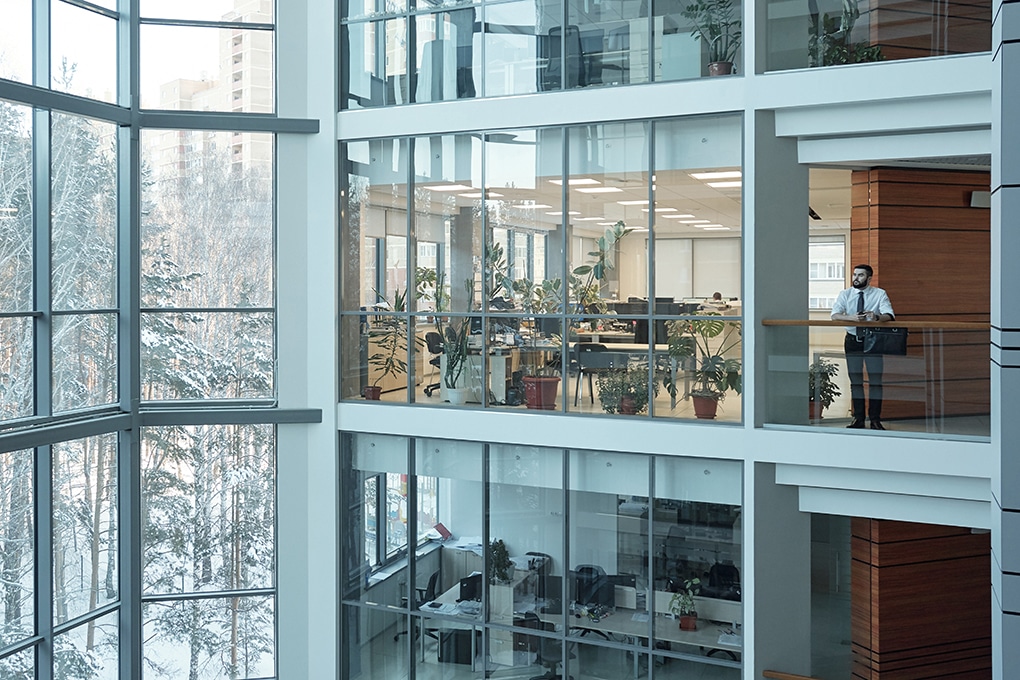
As well as digital security measures (RBAC, encryption and authentication controls), organisations need to construct and manage physical locations (sites, offices, facilities) that offer heightened protection to PII wherever it is processed or stored.
ISO outlines numerous human, environmental and urban threats that should be combatted through building planning, risk management and robust physical controls.
ISO 27701 6.8’s guidance is spread across six sub-clauses, each of which contains guidance from various controls within ISO 27002, applied within the context of PII and privacy protection:
ISO 27701 Clause 6.8 contains no supplementary guidance for the implementation and management of a PIMS, nor are there any UK GDPR articles to consider.
Perimeter protection operates on the principle of creating continuous internal physical barriers, that prevent unauthorised access to private information.
To maintain an end-to-end perimeter protection operation, organisations should prevent physical access to PII by:
Whereas ISO 27701 6.8.1.1 focuses on security perimeters, clause 6.8.1.2 outlines general principles to ensure that only authorised personnel are able to access areas that contain PII and privacy-related assets.
Organisations should:
When allowing visitors access to restricted areas, organisations should:
When designing and operating a loading area, organisations should:
Physical protection of PII and privacy-related assets also extends to rooms inside of an established security perimeter. To secure offices, rooms and facilities, organisations should:
To protect internal facilities, organisations should:
A ‘threat’ can be construed as any major event that has the potential to impact PII or privacy-related assets.
Organisations should embark upon a threat risk assessment before carrying out ‘critical operations’, that take into account changes in the threat environment, including both physical (e.g criminal activity) and environmental (floods, fires etc.) threats.
When constructing physical premises, organisations should take into consideration:
Once the risk assessment is complete, organisations should develop a series of controls that seek to both prevent and minimise the risk of a threat occurring, or reoccurring.
ISO mentions fire, flooding, electrical surges and explosives/weapons as being of particular importance. If resources are stretched, organisations should focus on these four areas as a priority.
Organisations need to safeguard PII and privacy-related assets by implementing a secure working policy for all personnel, that takes into account job roles and physical protection measures.
When formulating working policies in secure areas, organisations should:
See ISO 27701 Clause 6.8.1.2 (above).

Book a tailored hands-on session
based on your needs and goals
Book your demo
We can’t think of any company whose service can hold a candle to ISMS.online.
| ISO 27701 Clause Identifier | ISO 27701 Clause Name | ISO 27002 Control | Associated GDPR Articles |
|---|---|---|---|
| 6.8.1.1 | Physical Security Perimeter | 7.1 – Physical Security Perimeters for ISO 27002 | None |
| 6.8.1.2 | Physical Entry Controls | 7.2 – Physical Entry for ISO 27002 | None |
| 6.8.1.3 | Securing Offices, Rooms and Facilities | 7.3 – Securing Offices, Rooms and Facilities for ISO 27002 | None |
| 6.8.1.4 | Protecting Against External and Environmental Threats | 7.5 – Protecting Against Physical and Environmental Threats for ISO 27002 | None |
| 6.8.1.5 | Working In Secure Areas | 7.6 – Working In Secure Areas for ISO 27002 | None |
| 6.8.1.6 | Delivery and Loading Areas | 7.2 – Physical Entry for ISO 27002 | None |
How do we help?
In order to achieve ISO 27701 you must build a Privacy Information Management System (PIMS). With our preconfigured PIMS you can quickly and easily organise and manage customer, supplier and staff information to fully comply with ISO 27701.
You can also accommodate the growing number of global, regional and sector-specific privacy regulations we support on the ISMS.online platform.
To achieve certification to ISO 27701 you must first achieve certification to ISO 27001. The good news is that our platform can help you do both.
Find out more by booking a hands on demo.

Book a tailored hands-on session
based on your needs and goals
Book your demo